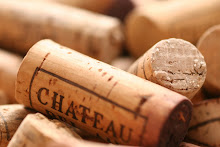
The 2007 Quilceda Creek allocation offerings are in. The cabernet in 750 mL format is $125, and $275 in magnum. Buy your entire allocation.
Unlike Sloan and Screaming Eagle, Quilceda Creek has resisted the urge to raise its prices in recent years. In addition, the 2007 vintage as a whole is a good bet for Washington state. The Wine Advocate gave the whole region a 92 score for that year. While the 2007 Quilceda Creek is still unrated by the Advocate, over the last 5 years this winery has turned out a string of high scoring cabernets. Three of the last five Quilceda Creeks earned 100 points, and the other two got 99.
Owners of the 2002-2006 vintages have done well in the marketplace. Even in this difficult market, the 2002 and 2003 are well north of $200 at auction, with average prices around $275 each (wineprices). Less auction data is available for the 2004, 2005, and 2006, but retail customers can expect to pay $225, $299, and $169 respectively for these three (wine-searcher). I expect auction prices to be about 20% less than the cheapest retail.
Is there risk? Of course. The 2001 Quilceda Creek got only 98 points from the Advocate, and it trades at $177 (wineprices), and that is a recent breakout to the upside. In 2006, it was barely over $100 on the secondary market. As pricing for the 2006 and the 2001 suggest, you need both a 99+ score, and a few years of cellaring time to double your money.










